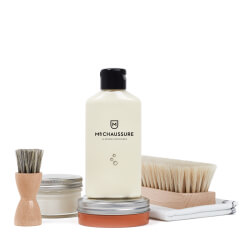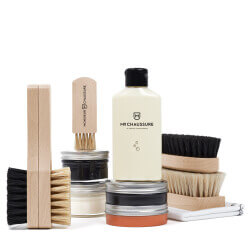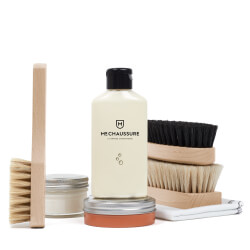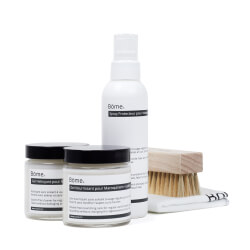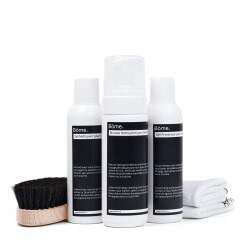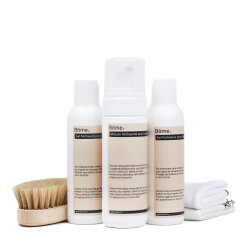How to remove mould from leather, specially on shoes?
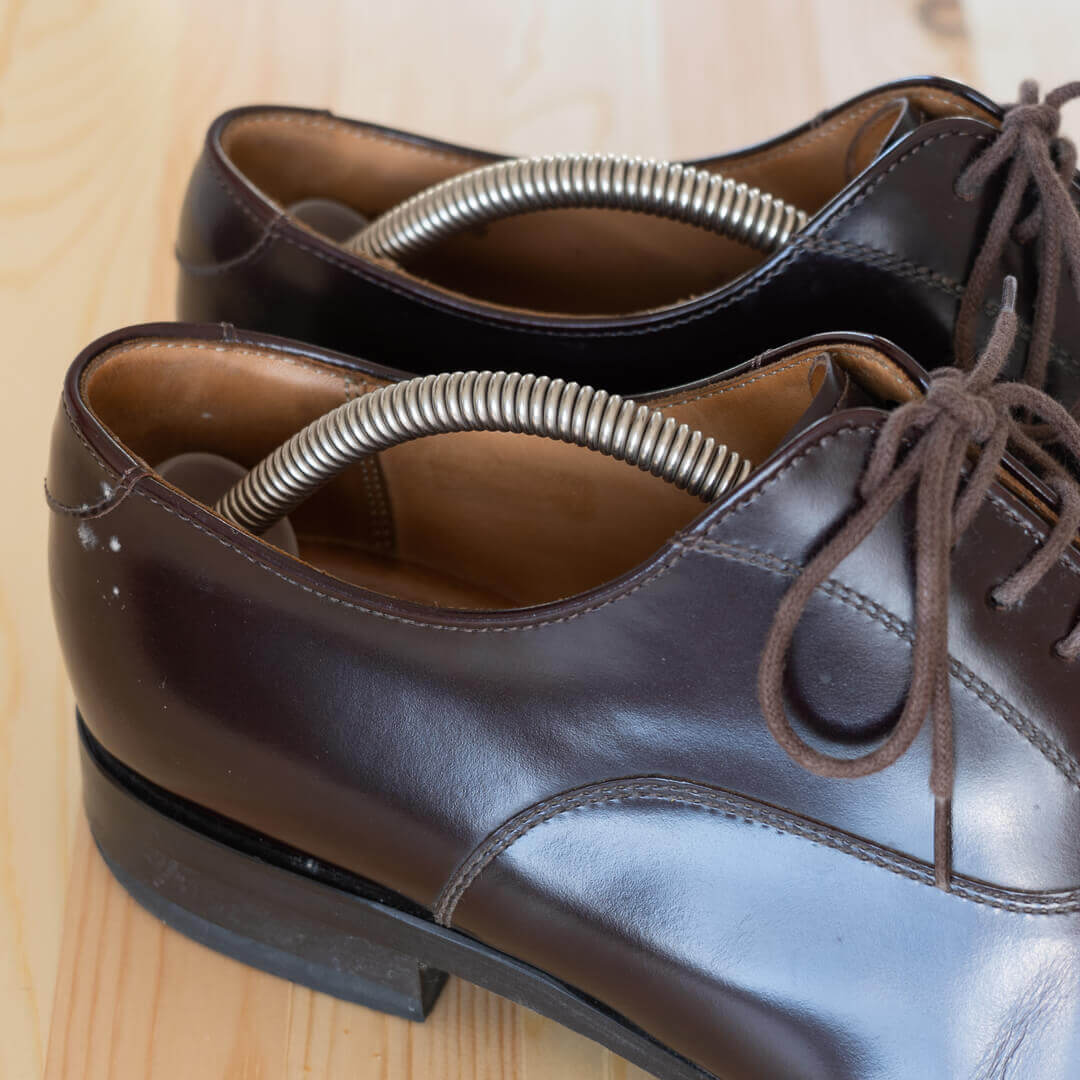
Introduction
Leather is a noble and timeless material that adds unparalleled refinement to any object.
However, mould can affect all everyday leather goods - shoes, bags, sofas - especially in damp, poorly ventilated environments or if they are not properly cared for. It appears as greenish or black spots or white filaments, accompanied by an unpleasant odour. Fortunately, a few simple steps can restore the elegance of your objects while preserving their original charm.
In this article, you will learn how to effectively prevent and remove mould from leather.
Why does mould appear on leather?
Mould is a fungus that thrives in warm, damp, dark and poorly ventilated environments. Factors such as accumulated dust, lack of maintenance or residual moisture after use encourage its development. For example, the inside of shoes after a day out can become a breeding ground if they are not properly dried or aired before being put away. That's why it's important to maintain and store your leather goods in the right conditions.
How should I store my leather goods?
To prevent mould, store your leather goods in a cool, dry place with a humidity level of around 50%.
To prevent your leather goods from becoming mouldy, make sure they are completely dry before storing them. Choose a cool, dry, well-ventilated area. A well-ventilated cupboard or one fitted with a dehumidifier is ideal. If you have no choice, store them in airtight boxes to protect them from moisture.
Leather bags and boots are often sold with a micro-ventilated bag. Remember to store them in this bag when you're not using them to protect them effectively.
Never store your leather items when they are still damp. Allow them to air dry before storing. For shoes, use shoe trees, ideally made from red cedar, which absorbs moisture and prevents mildew, and wait until the leather is completely dry before storing. Using a soft bristle brush to remove dust can also help prevent mould.
If you notice spores or a strange smell, it's time to act before the situation gets worse.
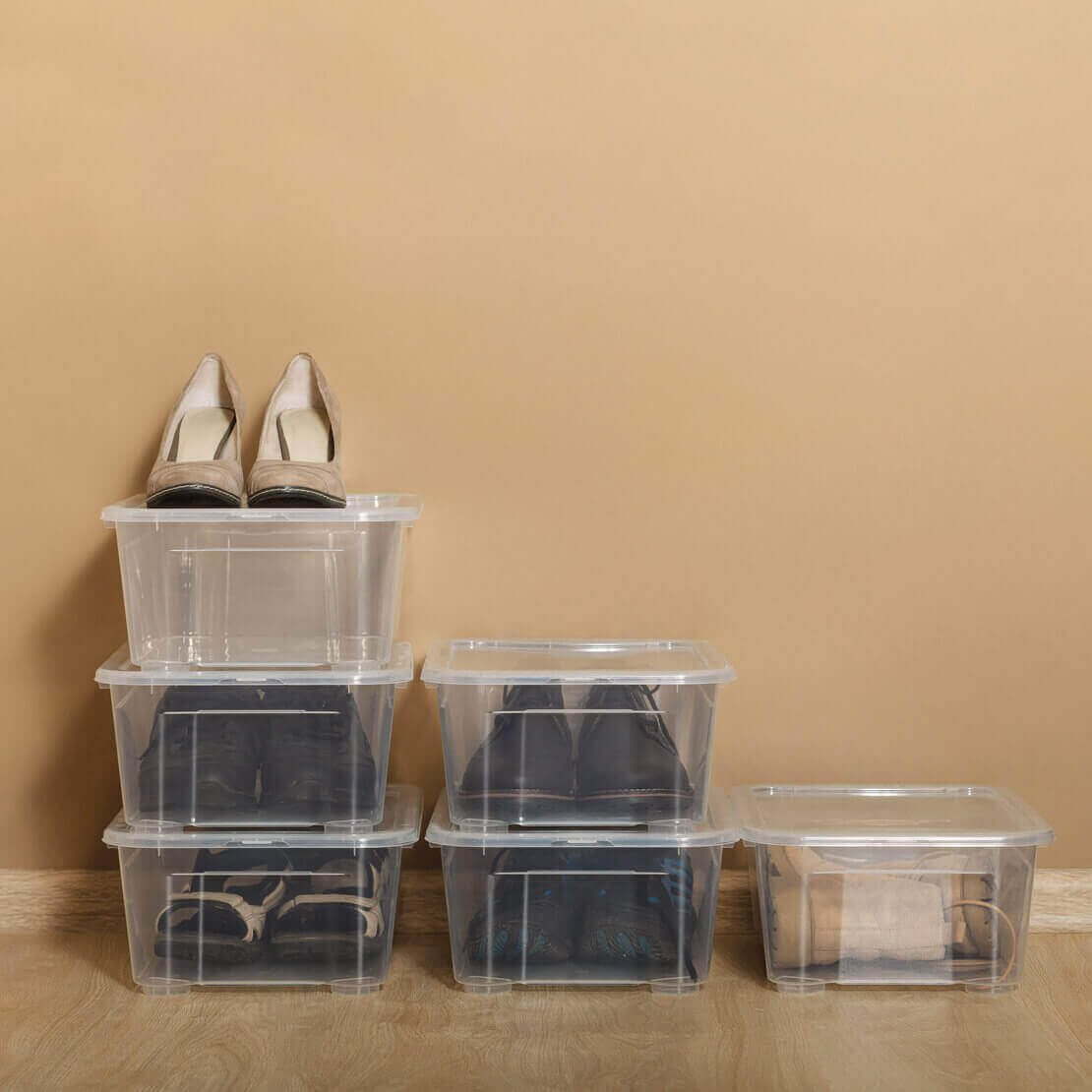
Precautions before cleaning
Before starting to clean your mouldy leather, sit down in a well-ventilated, open area to limit the spread of mould spores, which can easily contaminate your surroundings. For small items such as shoes, bags or jackets, clean them outside. In the case of a mouldy leather sofa, place a plastic sheet underneath to protect the surrounding surface.
Once all the preparations have been made, you can start cleaning the mouldy leather.
How do I remove mouldy leather from shoes?
We strongly advise against using tricks based on white vinegar or bleach.
Although white vinegar is often recommended for its disinfectant properties, it can be too aggressive for leather. Instead, choose a special leather cleaner that respects the texture and finish of the material.
Before you start cleaning, sit in a well-ventilated room and wear protective gloves.
Follow these four simple steps to bring your mouldy leather back to life:
1. Remove the mould: Start by gently scraping away the mould without damaging the leather to remove most of the stains. Use a soft bristle brush for this step to protect the surface of the leather.
2. Clean the leather: Use a special leather cleaner, such as Monsieur Chaussure Cleansing Milk, to remove mould from shoes. Use a chamois with the milk to remove all mould and dirt.
3. Moisturise and revitalise the leather: Apply the Tinted Shoe Cream to the entire shoe with a clean chamois.
4. Protect the leather: To prevent mildew from returning to the leather, apply shoe polish every month after cleaning. This will also prevent future mould growth. This protector forms an invisible film that traps dirt and prevents future damage.
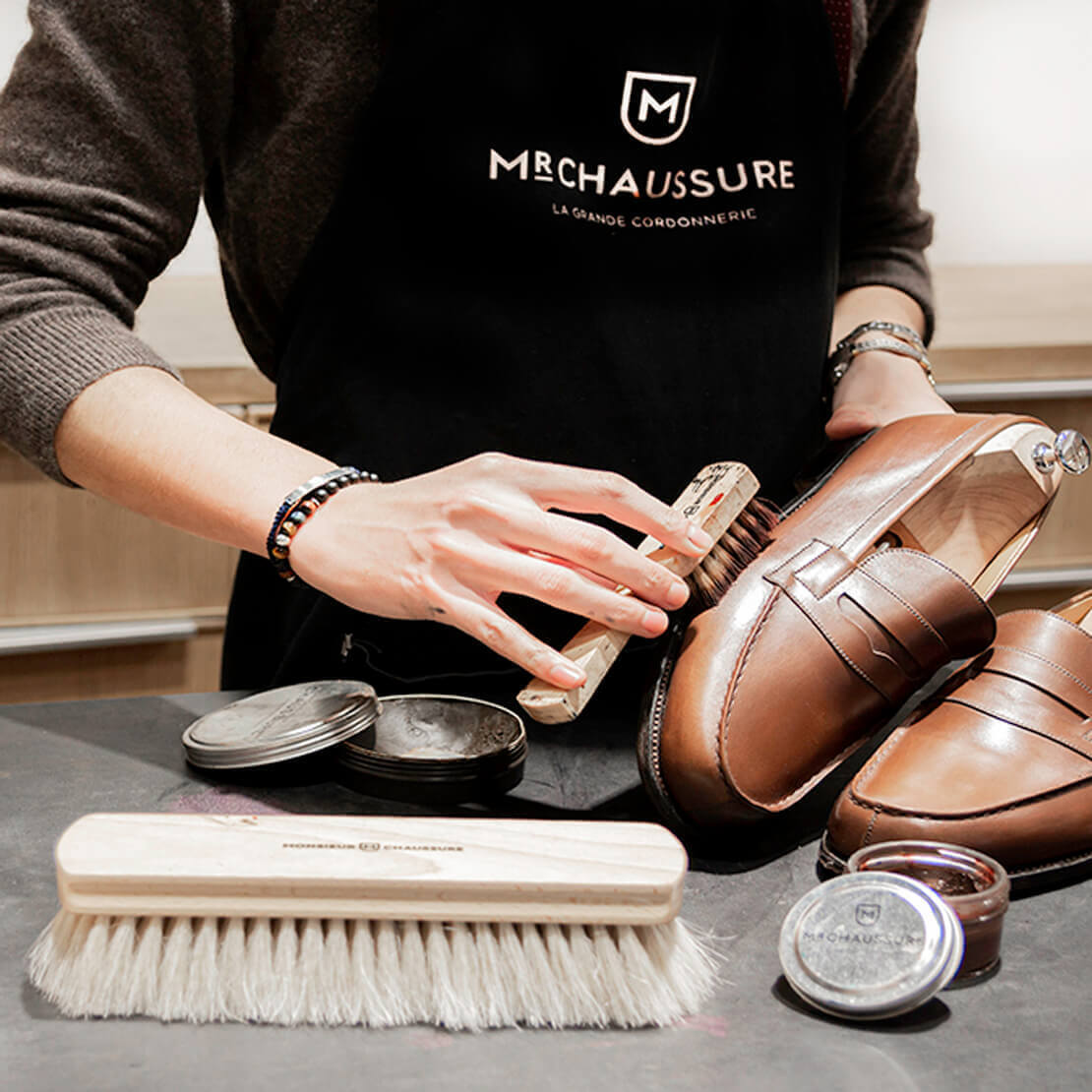
Prevent the return of mould
Further advice:
1. Drying and Storage: Allow your leather goods to dry in a well-ventilated area, then store in a dry place. Mr Shoe's tip: Use desiccants in your wardrobes for better preservation.
2. Use raw wood shoe trees: For shoes, we strongly recommend using red cedar shoe trees. Red cedar absorbs moisture and has anti-fungal properties that prevent the growth of mould.
3. Clean regularly: Clean your leather goods frequently with specific products to prevent the growth of mould and mildew. Monthly maintenance can detect fungal growth in its early stages.
By following these recommendations, you'll protect your valuable leather goods from mildew and prolong their life while maintaining their elegance and quality.
Take the necessary steps today to give them the care they deserve. Take care of your leather goods and they will repay you by retaining their beauty and prestige over time.

